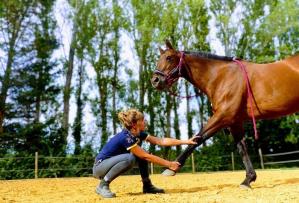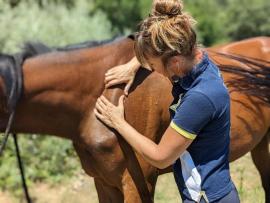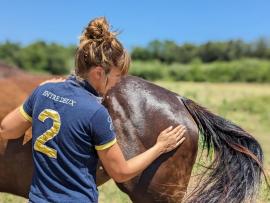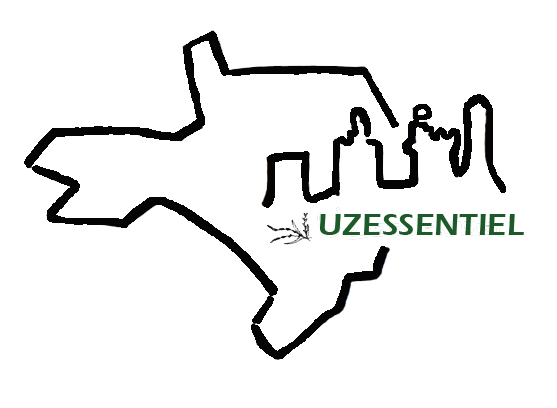Focus on animal osteopathy
- Par nbesse
- Le 28/07/2023
- Dans Living in Uzès and around
Part of the French national order of veterinary, the animal osteopathy practice aims to prevent functional disorders of the animal's body.

Gentle, non-invasive manipulations help animals regain their mobility and/or relieve tension, pain and other complaints.
To find out more about this little-known practice, we decided to meet Chloé Lefort, an animal osteopath in the Gard and neighbouring departments.
LET'S TALK
Hello Chloé,
How do you go about becoming an animal osteopath?
Hello, thank you for giving me the opportunity to talk about this wonderful medical practice.
Since 2019, animal osteopathy studies last 5 years. With the recognition of non-veterinary osteopathy, the training standards have been working to provide a framework for serious training enabling the acquisition of various skills.
I have to admit that osteopathy was not an obvious choice for me at the beginning. I wanted to become a veterinary but then, I had followed an agricultural engineering course. During an internship at the Haras d'Uzès, I started thinking about animal osteopathy.
I've always been a horse rider. So that's what I needed, a training that would enable me to combine my love of animals with working outdoors. Although I specialise in horses, I also treat dogs, cats and goats...
I'm trully delighted with my career path, because it has enabled me to be more mature and more open in my practice today.

How does osteopathy complement other medical disciplines?
Animal osteopathy is a manual therapy with a holistic approach. This means that animal osteopaths look at their patients as a whole.
Several factors are therefore taken into account: the animal's environment, diet, activity, history, etc.
As a result, it's very interesting to work with all the professionals involved in the animal's care.
We have to talk to vets, farriers, chiropodists, saddle fitters and so on.
How does a session work?
It depends on the problem, the reason for the consultation and the trauma. I meet both animal and owner. We discuss the animal's activity, its behaviour, diet, medical history and past history.
I draw up a sort of checklist, based on questions and answers, which helps me to better understand what I can offer my patient. Next, I analyse the patient's locomotion.
By carrying out various tests, I find the dysfunctional areas of the body and then treat the animal methodically and precisely, taking care to regularly check the impact of my manipulations on the quality of the tissues and the locomotion of my patient.
The first contact with the animal is particularly important so that it doesn't feel apprehensive, or is afraid of our session. I can start to handle the animal if it agrees (which is not always the case I have to say). It's about sharing and working together, and you need to be able to establish a relationship based on trust.
I can also contact the vet for a second opinion or to find out more about the treatment given, the X-rays taken, etc.
 What do you bring to the animal?
What do you bring to the animal?
The aim of osteopathic treatment is to help the body restore its equilibrium through its self-healing capacity by acting on restrictions in tissue mobility, whatever they may be (joints, muscles, soft tissue, viscera, etc.).
When I treat a dog, the anatomy of different breeds inevitably comes into play. I don't approach a German Shepherd, a Border Collie or a French Bulldog in the same way.
As for the horses, it's very interesting to talk to the professionals who supervise the riders. I have many exchanges with saddle fitters or riding instructors, for example.
All this helps me to complete my treatment, adapting the equipment used or thinking about exercises that will make the horse function more symmetrically and effectively.
And what about training?
Yes, training is a project I'm maturing... To start training new practitioners. Passing on my passion and my knowledge would be great.
Many thanks to Chloé Lefort for her collaboration to this article.
The right address: Chloé Lefort, animal osteopath, Tel: 06 79 50 51 60, @chloelefort_osteoanimalier.






